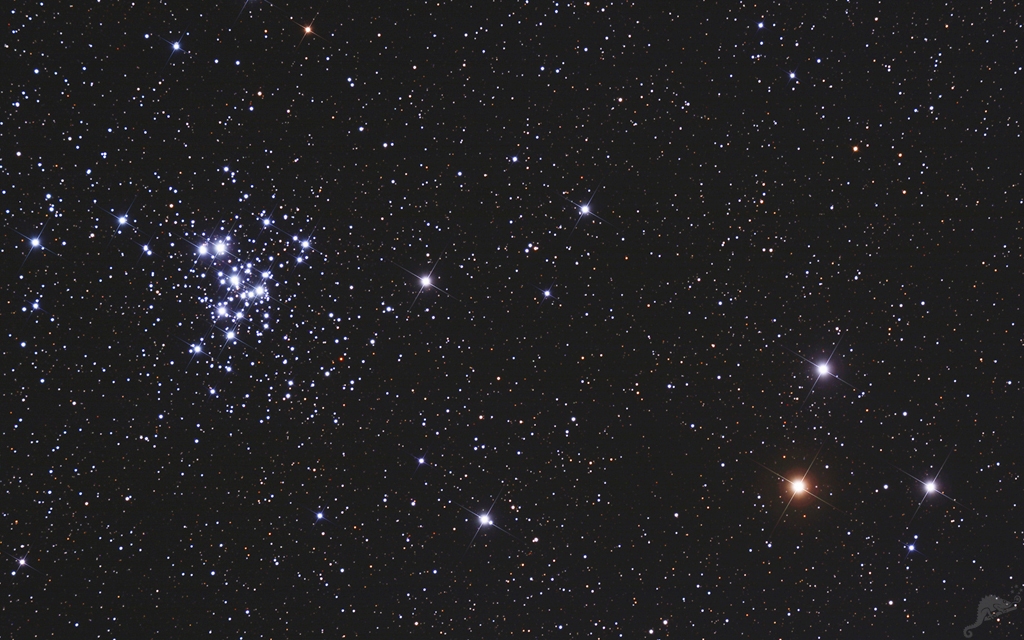 |
CHAMÄLEON + ONJALA OBSERVATORY DeepSky | SITEMAP HOME CHAMÄLEON |
|
 |
|||
| « back to overview Star Clusters | Load higher resolution (1800 x 1200 Pixel – 2900 x 1900 Pixel) | Object description |

The open star cluster NGC 6321 can be already seen with the naked eye in the constellation Scorpion next to the bright star zeta Scorpii. The cluster belongs to a larger group of young and hot stars, which is called Scorpius OB 1 association. The distance from the earth to NGC 6231 is 5700 light years. Assuming a diameter of 15 arc minutes in the sky for the brightest part of the cluster, translates into an absolute diameter of 25 light years. Zeta Scorpii consists of two stars, which, optically, are a double star system. The brighter star is zeta 2 Scorpii, which is a common orange giant star with a distance of 150 light years.
The apparently weaker star, zeta 1 Scorpii, is one of the brightest stars of the milky way but 40 times further away. It belongs to the Scorpius OB 1 association and likely also to the cluster NGC 6231. This star shines 1 million times stronger than our sun and is 60 times more heavy. It belongs to the category of hyper stars, which are the heaviest and brightest existing stars.
Both NGC 6231 and zeta 1 Scorpii are equally influenced by interstellar dust. Interstellar dust dims the light of stars by a factor of six and also leads to a red shift of the light. This is why the young, hot stars of the cluster and 1 Scorpii don't look blue but rather white. The blue component of the light is scattered out by the dust.
 |
 |
 |
 |
 |
 |
 |
| Sun | Moon | Solar System | DeepSky | Widefield | Miscellaneous | Spec. Projects |